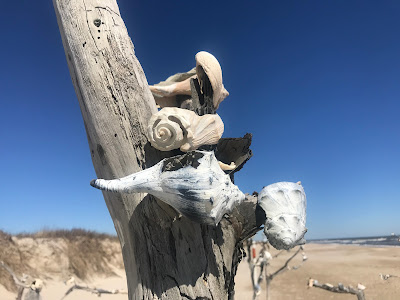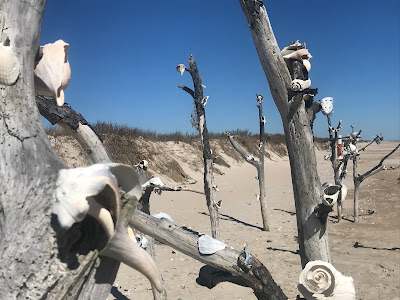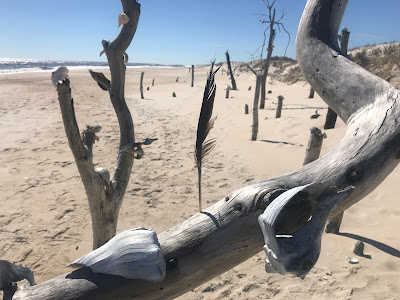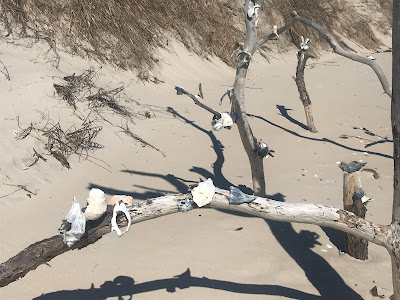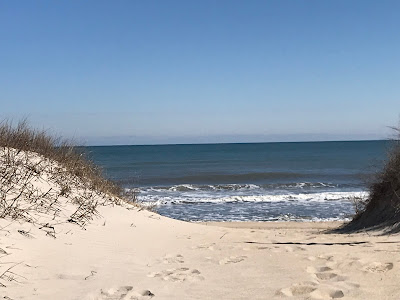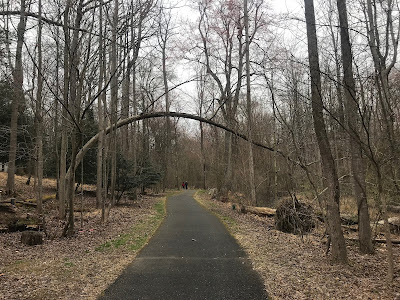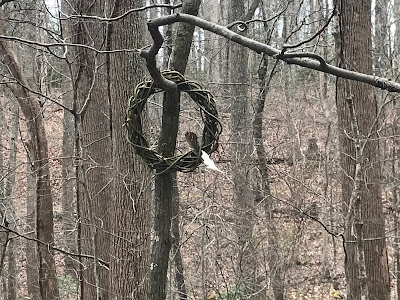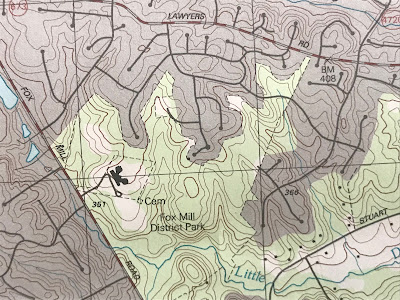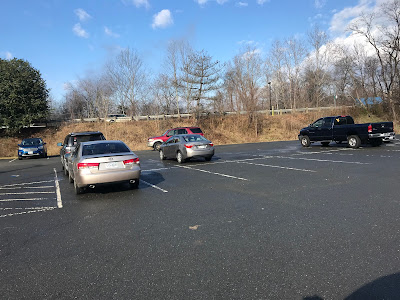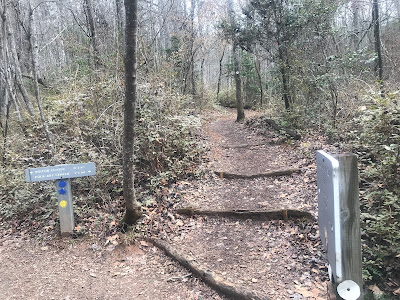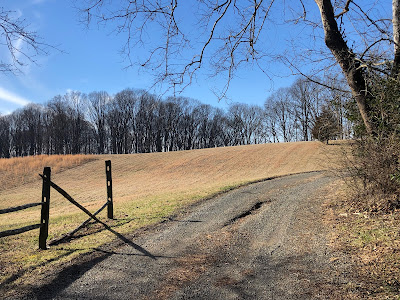Beach Bling
Water, wind, sand and sky. From these basic elements flow the beauty of a beach. It doesn’t need anything else. But like a little black dress set off to perfection with a single strand of pearls, even simplicity can be enhanced with a little bling.
I’ve seen beach art before, but never so much of it. On a hike this week we came across scores of tree trunks decorated with whelks, conches, cockle shells — and a few feathers for good measure.
The shell trees made us smile. They invited us to contribute, which we did. They sum up the beach attitude: relax, create, enjoy.
